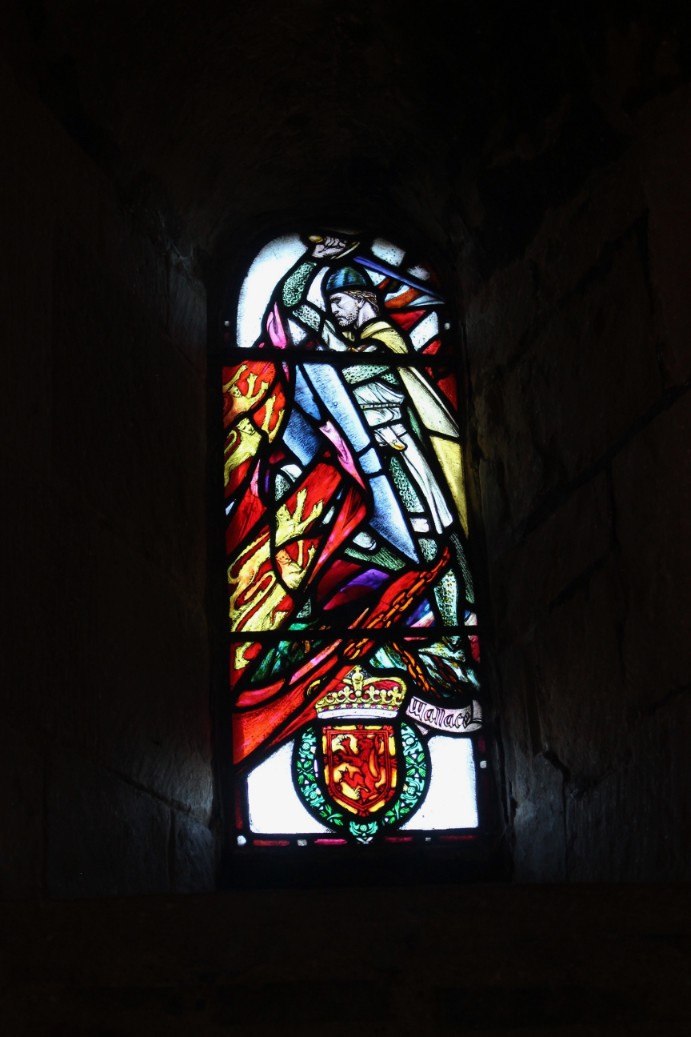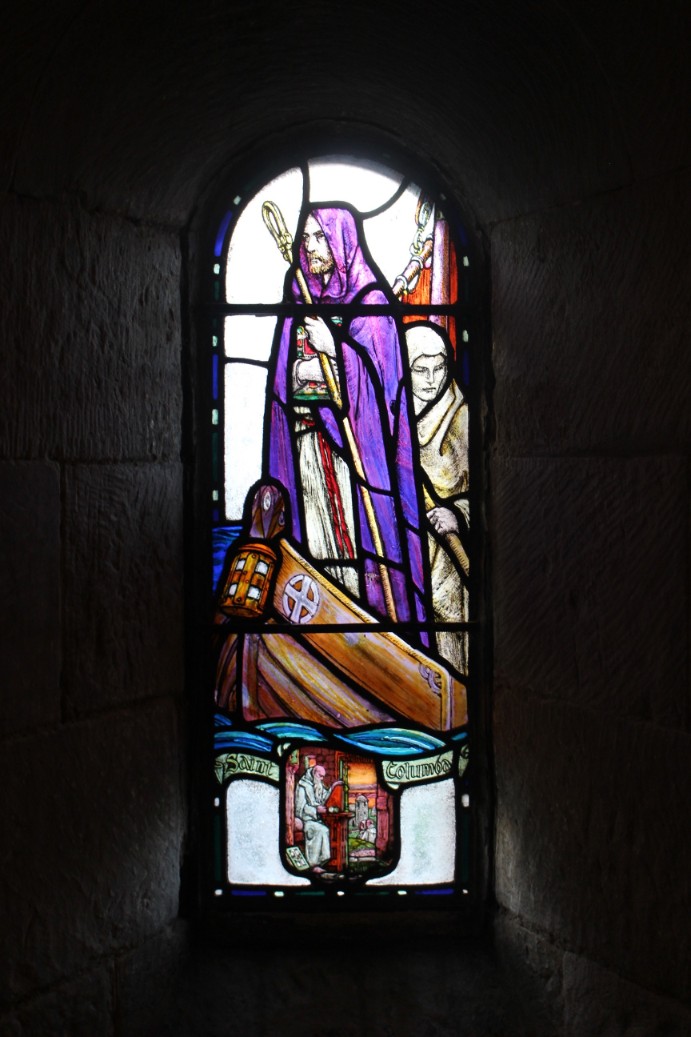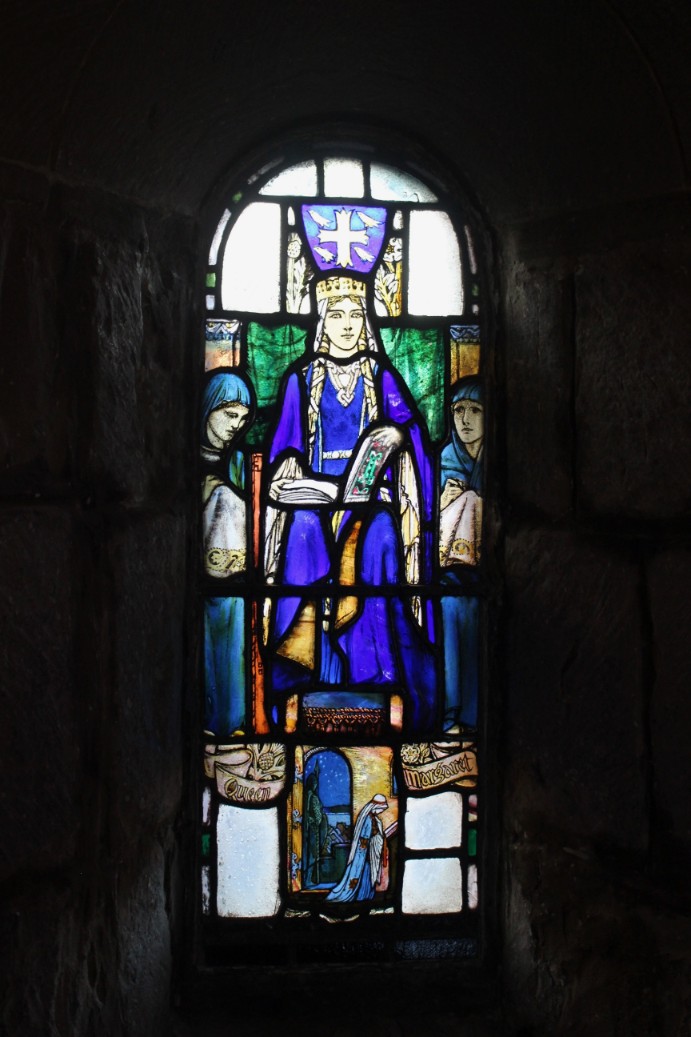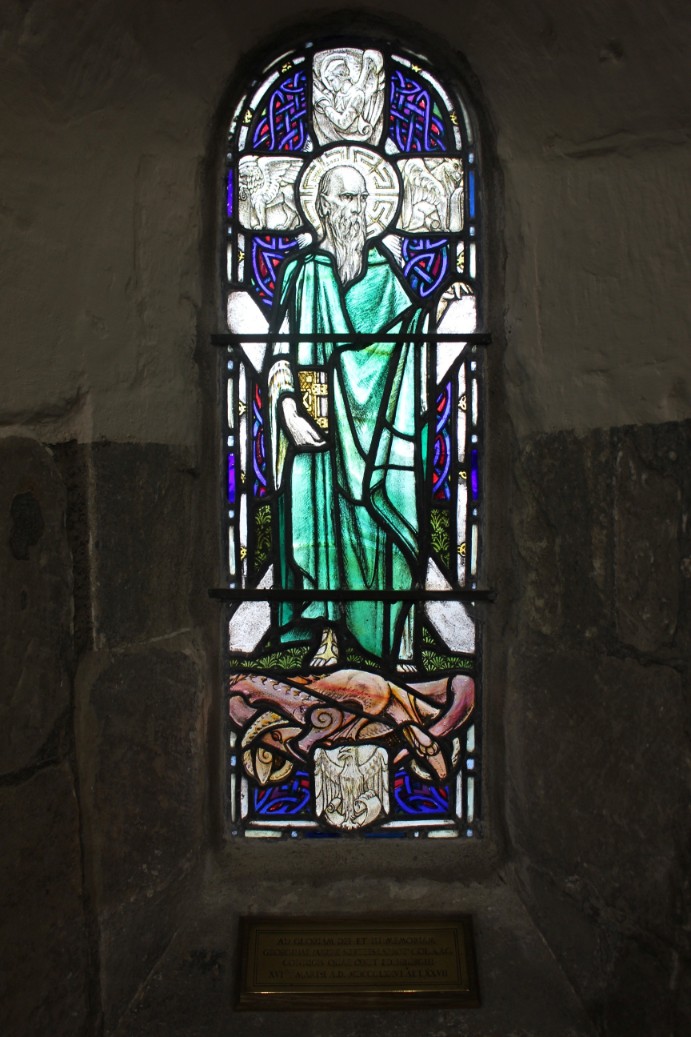Stained Glass Windows
The stained glass windows in the Chapel were designed and made by Douglas Strachan (1875-1950). An Aberdonian lithographer and painter, he became Britain’s foremost stained-glass artist in succession to Christopher Whall a pioneer in English Arts & Crafts-stained glass. Through time, Strachan created vast, spectacular windows in the Scottish National War Memorial at Edinburgh Castle and in The Peace Palace in The Hague. In contrast, his dainty, shoulder-height windows in St Margaret’s Chapel, each in distinctively coloured glass, with clear, thick slab glass pieces to make the light ‘dance’ through, shine like jewels. Lead-lines define objects: faces, folds and shadows are finely painted or stippled on.
The other windows in the Chapel include: St Andrew, Patron Saint of Scotland; William Wallace, Guardian of Scotland; and three other famous Scottish saints: Ninian, Columba, and Margaret on the south wall. Details of each window are below:
- St Andrew Called by Jesus from his fishing nets, Andrew carries a Gospel book written by one of his friends, and is identified by his martyr’s halo, diagonal cross and sea food (possibly a lobster?). The four gospel writers are depicted on a Celtic Cross: Matthew (Angel), Mark (Lion), Luke (Ox) and John (Eagle).
- St Ninian (360 – 432) Possibly the son of a Christian Briton Chief, Ninian travelled as a pilgrim to Rome, becoming a bishop there. Visiting St Martin of Tours in France en route, he travelled on as a Christian missionary to Celts and Southern Picts in south west Scotland. Clad in a red cloak, he arrives in a small boat and in the predella (base) of the window, we see pilgrims kneeling before Ninian, seeking healing and blessing.
- St Columba A 6th century Irish Abbot and missionary, Columba came with a group of his followers to the Scottish island of Iona. The detail photograph shows the characteristically Scottish purple-pink heathery colour of Columba’s robe, a colour much used by Strachan, derived from ‘new’ glass chemistry discoveries in the Industrial Revolution. The head and torso of the oarsman are painted on two pieces of ‘white’ glass; the orange-red sail is in striking colour-contrast to the purple cloak.
- Queen Margaret Her dress, in many glass pieces of a primary-blue colour, deepens in tone from shoulder to hem. Margaret is portrayed full-face, open and welcoming. Her embroidery class is around her. The window also shows the Firth of Forth, possibly at South Queensferry. The square slabs of glass in this window echo the square mediaeval stones of the Chapel.
- Sir William Wallace Hero of the Battle of Stirling Bridge and Guardian of Scotland, Wallace wears chain-mail body armour in a dull grey colour, sword in his right hand ready for battle. Strachan’s teacher, Christopher Whall and pupils made papier mâché chainmail pasted on to a man and worn when dry, to learn how to draw it. Contrastingly, the left side of the window carries Wallace’s blazing banner of four gold lions, couchant, on red.
We are grateful to the Scottish Stained Glass Trust for their research https://ssgt.org.uk/
References:
Arts and Crafts-Stained Glass Peter Cormack Pub. Yale University Press 2015
St Margaret Queen of Scotland and her Chapel Pub. St Margaret’s Chapel Guild, 2016
Alison Margaret Robertson January 2022




